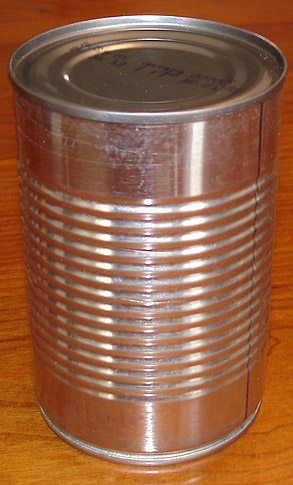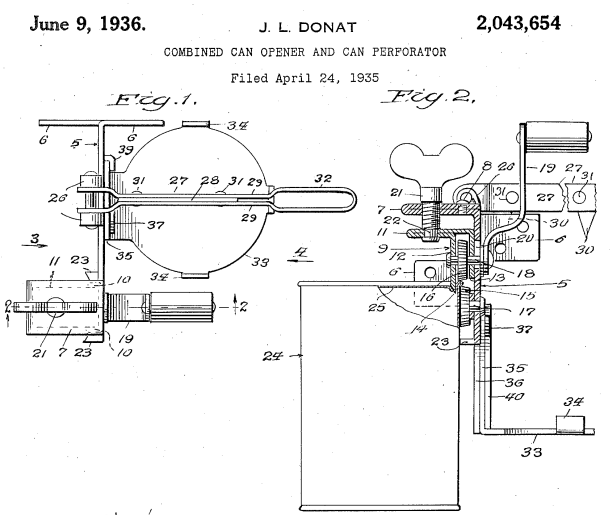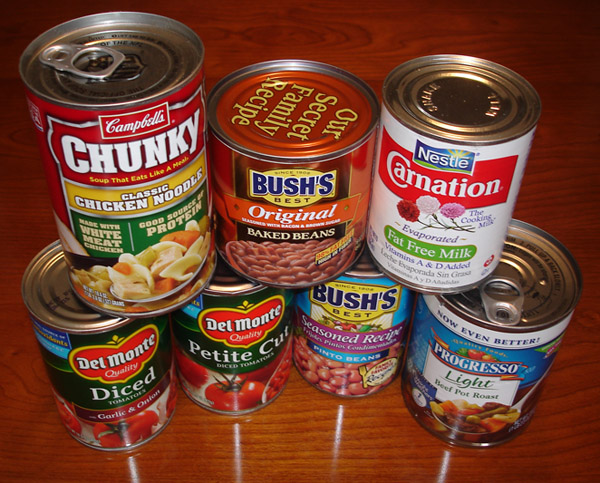Canning and the Tin Can
by Andrew Boyd
Today, it's in the can. The University of Houston's College of Engineering presents this series about the machines that make our civilization run, and the people whose ingenuity created them.
The year was 1809 and Napoleon had a problem. His military campaigns were being disrupted — by food. It would spoil before reaching the front lines. So the French government offered a prize of twelve-thousand francs for a solution.
And that solution was canning. Nicholas Appert discovered that when food was heated to high temperatures then placed in tightly sealed containers, it would keep for long periods of time. (He made his discovery a half century before Pasteur's work on germ theory.) Appert is considered by many the father of canning. But he was missing one important innovation: the can. Appert used glass — not the most practical container for wartime transportation.

The can arrived on the scene just a year later when Englishman Peter Durand filed a patent for tin cans. The earliest tin plated cans looked a lot like today's — a flat sheet of metal wrapped to form a cylinder, with circular cutouts fastened onto each end. Cans were originally made by hand. The process of making the can and sterilizing the food was expensive and as a result canned food was consumed mostly by the military. Canned food found a home in the United States during the Civil War.
Oddly, it took another fifty years from the invention of the can to the invention of the can opener. Prior to that, hammers, chisels, and bayonets were the openers of choice. It's not difficult to imagine that can opening was a frequent cause of injury. It's also not entirely clear why the invention of the can opener took so long. Some point to the arrival of thinner metal cans, but it may simply have been that no one thought a specialized tool was necessary. After all, what were hammers and chisels for?

The earliest can-making craftsmen could complete sixty cans per day. According to the Can Manufacturers Institute, over 130 billion cans are now manufactured every year just in the United States. That's over four hundred cans per person. Of course, tin plated cans have ceded shelf space to aluminum cans, especially for beverages. And that has its advantages. Aluminum cans are one of the most efficiently recycled containers of any kind.
As advances in technology made cans less expensive to manufacture, they found their way into homes, and more and more types of food found their way into cans. Some foods — like tomatoes, beans, pineapple, and tuna — are very popular in cans. Others — like Spam and Spaghettios — have a smaller though passionate following.

Cans aren't glamorous. Canned peas can't compare with fresh. And canned milk takes some getting used to. But canned foods are easy to store and distribute. That means cans are still used in war, but today that's more often the war on hunger than on humankind.
I'm Andy Boyd at the University of Houston, where we're interested in the way inventive minds work.
Notes and references:
Canning. From the Wikipedia Web site: https://en.wikipedia.org/wiki/Canning. Accessed June 14, 2011.
Romance of the Tin Can. Modern Mechanix, February, 1937.
The can pictures are by E. A. Boyd. The picture of the can opener is from the U.S. patent office.